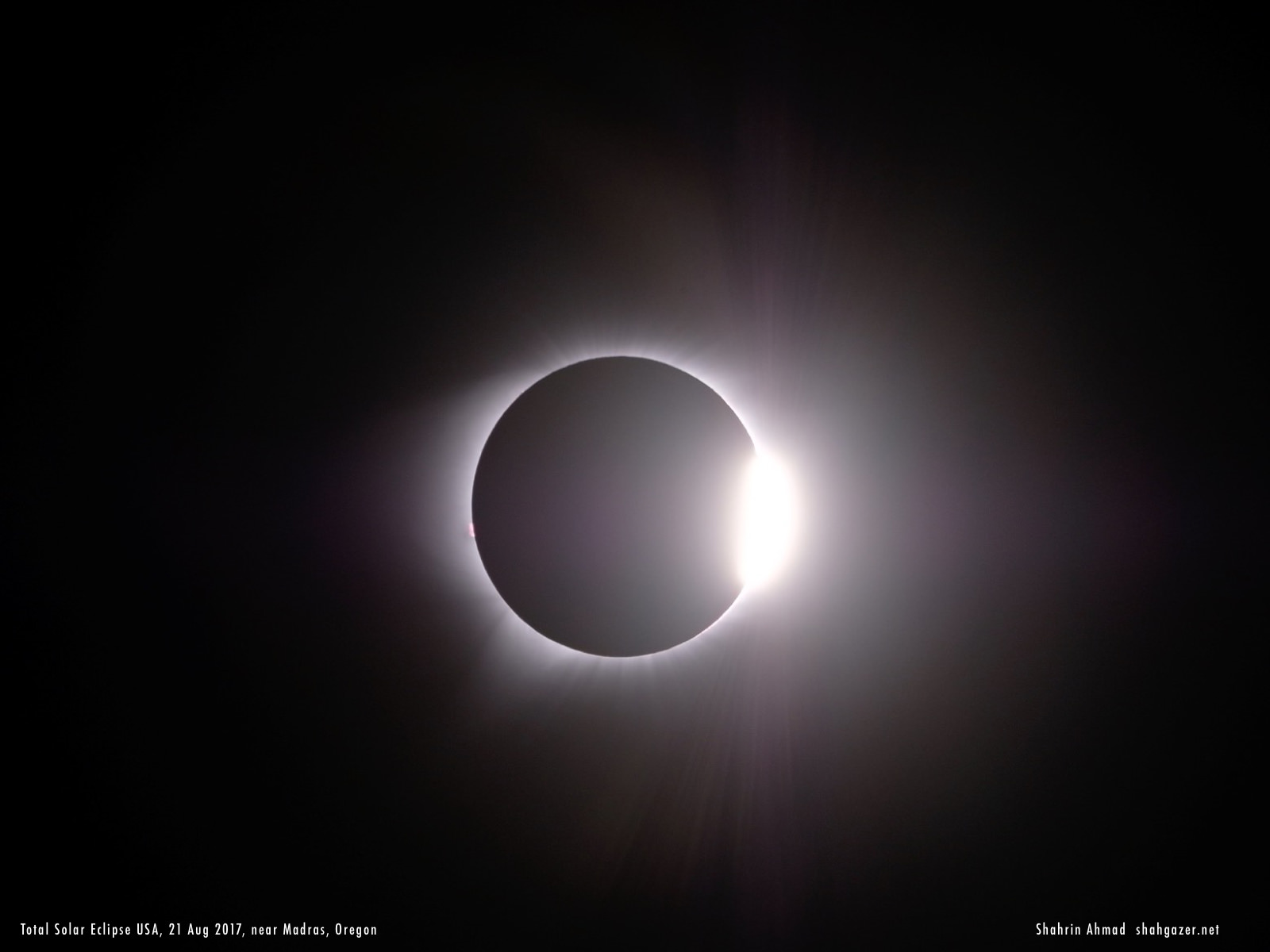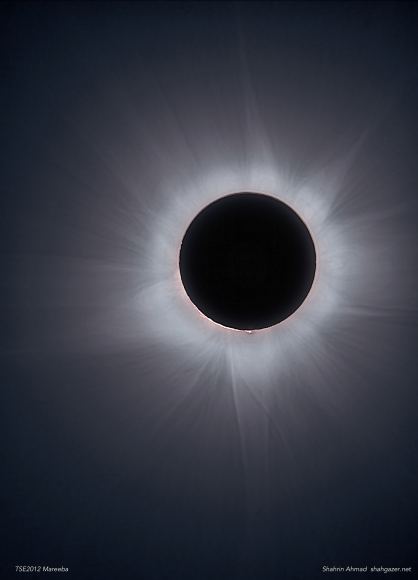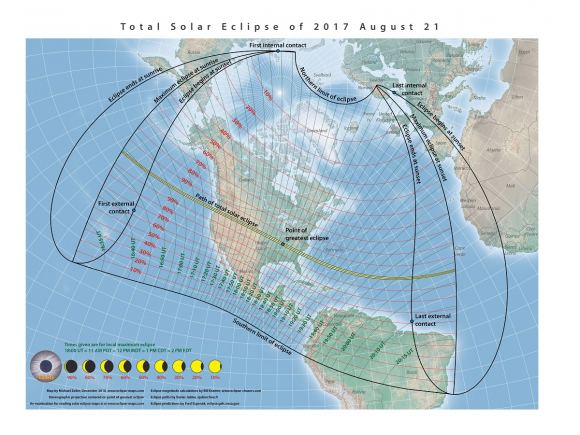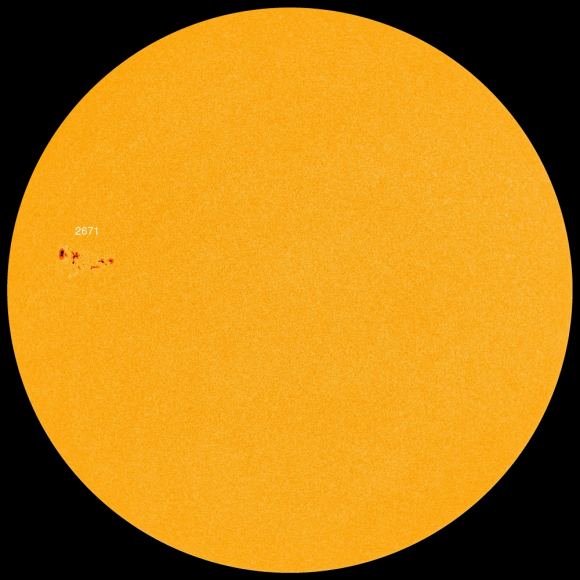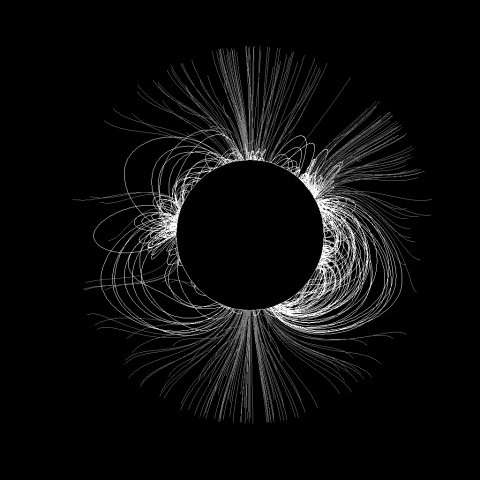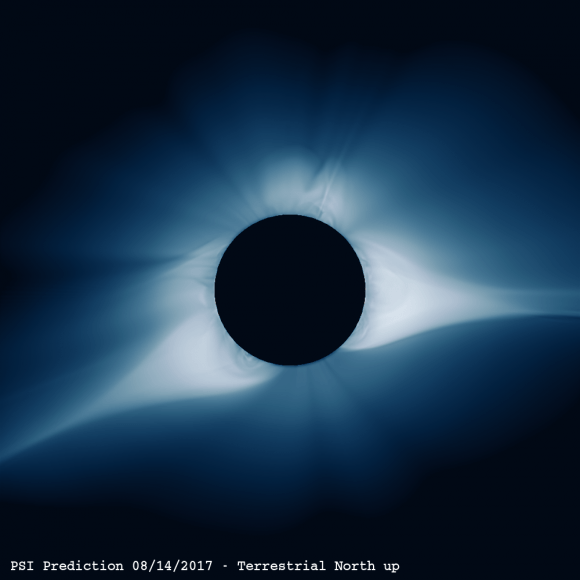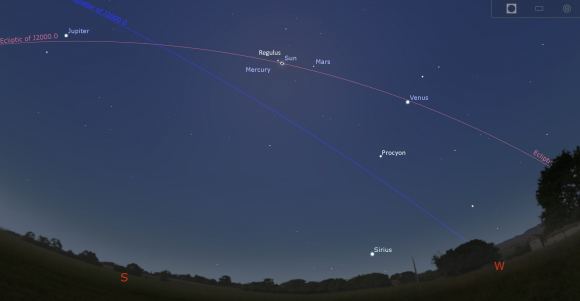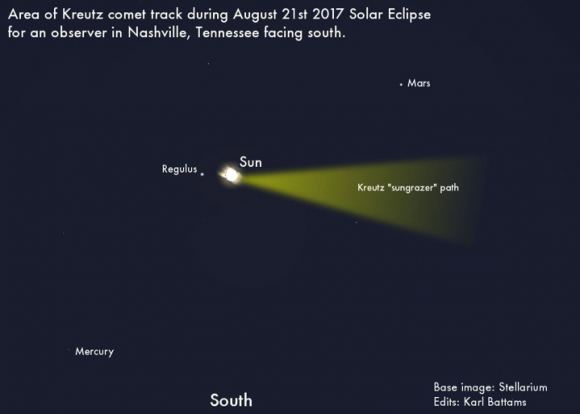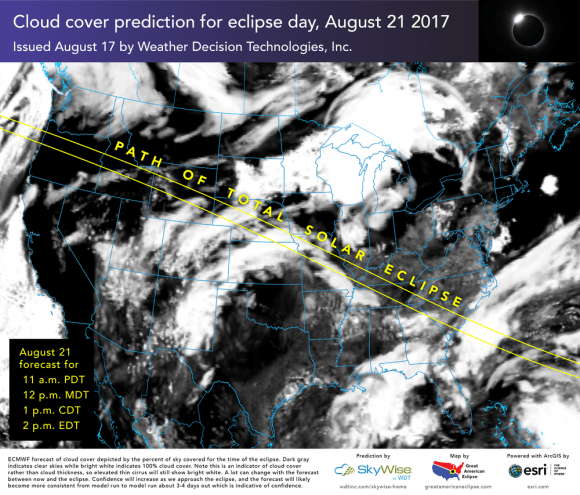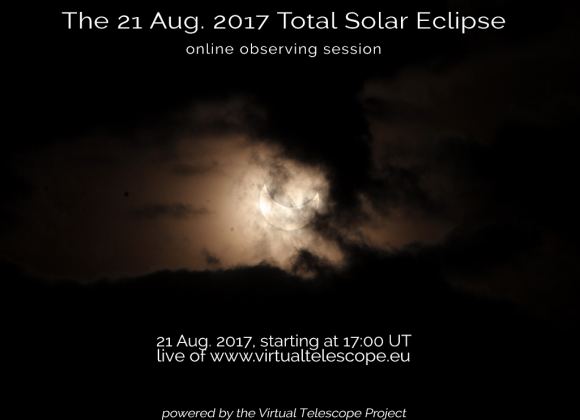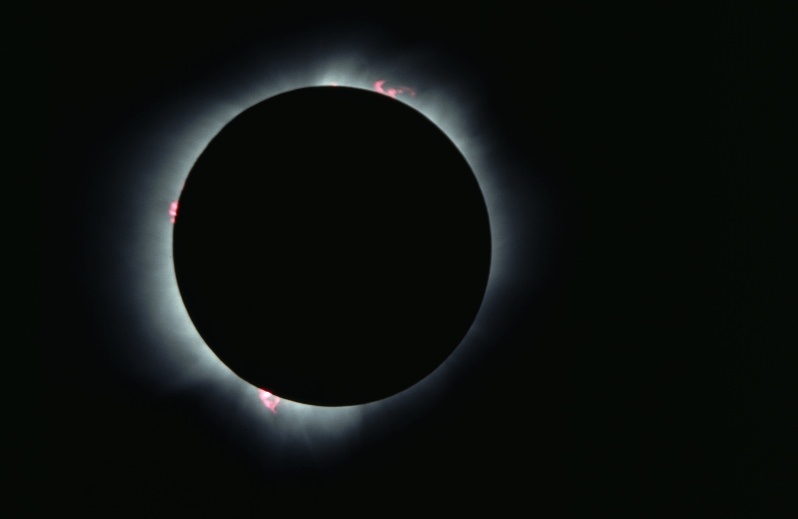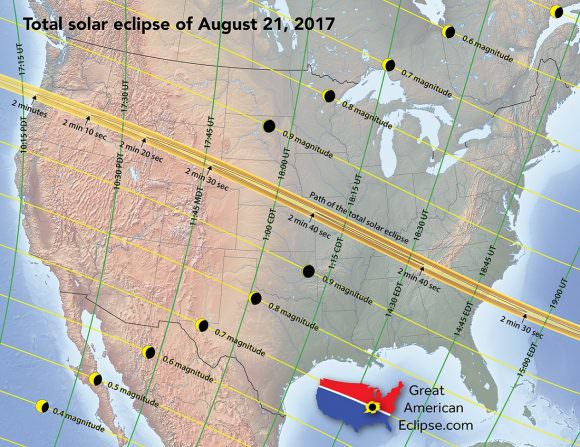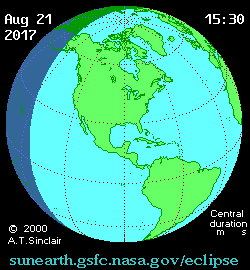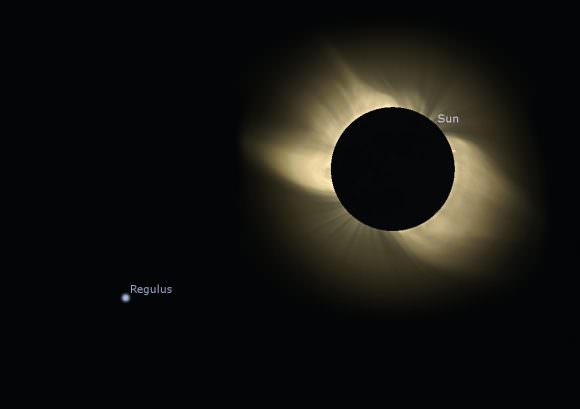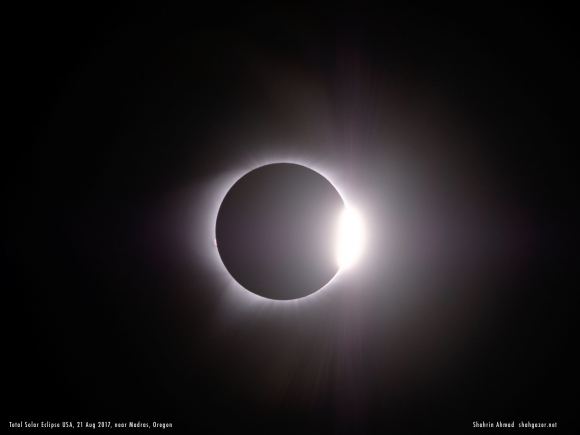
They came, they saw, they battled clouds, traffic and strange charger adapters in a strange land. Yesterday, millions stood in awe as the shadow of the Moon rolled over the contiguous United States for the first time in a century. If you’re like us, your social media feed is now brimming with amazing images of yesterday’s total solar eclipse.
Already, we’ve seen some amazing reader images at Universe Today, with more to come. As a special look at a unique event, we’ve collected reader testimonies from every state along the path of totality of just what the eclipse was like.
Enjoy!
Oregon- Shahrin Ahmad (@Shahgazer)
We drove from Dalles at 3 AM. Nearing the observation spot, we got a flat tire! It was 5:30 AM, and no phone line! I sent a text to the land owner and somehow it reached him and we managed to be there by 6:30 AM. We observed from a secluded spot about 30 miles from Madras, with a 2 minutes and 2 seconds of totality. The sky was really clear during sunrise, but as totality approached we got some thin clouds hovering in the east. Luckily, it was thin enough to not spoil anything. The corona was incredibly beautiful with longer (streamers) jutting out at the 4 and 8 o’clock position. The first and second diamond ring were spectacular with the eye, probably with the help with the thin clouds. We calculated about 7 degree drop in temperature. The shadow was enormous, engulfing Mt Hood from the west and flew past above us towards and towards the Sun. Mesmerizing! 2 minutes simply was not enough, since this is probably my best view of a total solar eclipse so far!
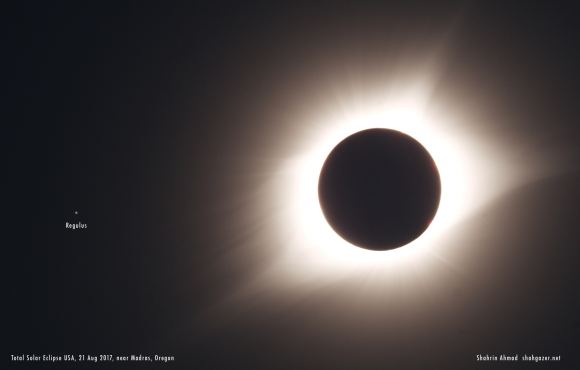
(Note: to our knowledge, no one witnessed the brief moments of totality as the umbra of the Moon brushed tiny corners of Montana and Iowa… if you’re reading this and did so, let us know!)
Idaho- Bruce McCurdy (@BruceMcCurdy)
How to describe such a magnificent spectacle in a “brief paragraph”? Our group from Edmonton observed totality under clear skies near Birch Creek, Idaho. After the Moon’s silhouette inexorably progressed & gradually swallowed up an impressive line of sunspots, the pace of dynamic events picked up dramatically in the minutes surrounding totality. The temperature dropped noticeably. Light faded & became “flat” while shadows became better defined & lost their fuzzy edges (penumbrae). The Moon’s onrushing shadow became visible on the mountains to our west, while rapidly-moving shadow bands squiggled on the ground around us. The sky took on an eerie indigo hue as the last vestiges of direct sunlight were obscured. A new & temporary centrepiece emerged in the sky: the black circle of the lunar night side highlighted by a spectacular corona, its far-flung pearly-white streamers contained within sharply defined edges. Around the black limb fiery coral pink prominences added intense colour highlights to the scene. Just beyond the corona gleamed Regulus, closer to the Sun than is possible for any other star of first magnitude or brighter, while off to one side Venus shone brilliantly, far higher in the sky than its customary window of dominance in normal twilight. All too soon the right edge of the lunar silhouette brightened, then blossomed in a brilliant diamond ring that continued to intensify for a couple of glorious seconds until filters again became a must. By now the mountains to our east were in darkness as the umbral shadow receded from our immediate location, leaving a number of our small party in tears from the intensity of the experience.
Wyoming- Kelly Kizer Whitt (@Astronomommy)
We woke up in the Tetons Monday morning to a sky streaked with clouds. But the hourly weather report showed clearing, so we headed to our spot before 7 AM. We were able to secure parking by our preferred observing location, the Mormon Barn with a view of the iconic Teton range in the background. Looking east, we saw the clouds slink away to the south until skies were blue and clear, despite lingering haze and smoke on the northern horizon from wildfires.
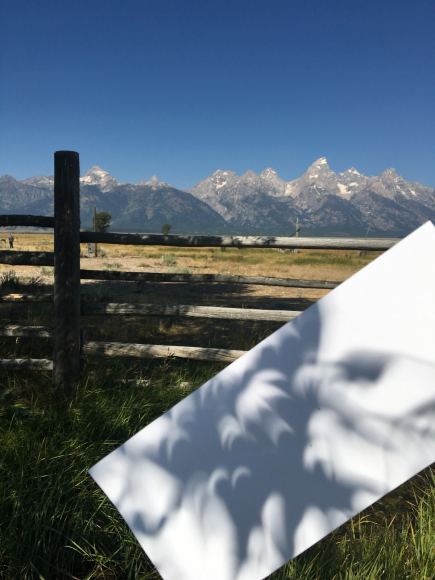
Having been a science writer for two decades, I was well versed on total solar eclipses even though I’d never seen one first hand. But it didn’t unfold quite as I expected. The sky and air didn’t take on a twilight quality until the Sun was well over halfway obscured. Then when darkness fell, it came fast and the temperature dropped hard. We had on our eclipse glasses and were staring at the Sun, waiting to see bailey’s beads or the diamond ring. But first I glanced down and saw the slithering, wiggling lines of darkness and light known as the shadow bands. They have a truly creepy quality as they dance in the growing dark. Then we looked back up as the sliver of orange disappeared and the Sun winked out from our glasses. Pulling them off, my family let out cries of surprise when they saw the black hole where the Sun had been, surrounded by the long, wispy, intricate corona. The eclipsed Sun and corona took up a much larger space in the sky than I expected, but the photo I took (just like when photographing a full moon) does not give a true representation of what you can see with your eyes.
I only took three photos because I wanted to just enjoy the view. I almost forgot to look for the stars. We saw a plane, Venus, and Sirius. Our eyes never adjusted enough to spot Jupiter or the others and the rosy glow of a false twilight brightened all horizons in a 360-degree ring. So soon it was over. The bailey’s beads and diamond ring we missed as the total eclipse began, and appeared to us instead at the end. These phenomena were a bright and beautiful warning to get our eclipse glasses back on. The world returned to daylight fairly quickly, but the drop in temperature lingered a bit longer. Our memories will last a lifetime.
Nebraska- (@BigBadEd)
Having doubtful cloud forecasts for Scottsbluff & Carhenge, we met on a foggy morning in Sidney, Nebraska with thoughts of changing plans to Wyoming for clear skies. As the forecast improved, 15 of us set off for Carhenge. We arrived before 7 AM to plentiful parking & a few hundred people. Towards 9 AM the crowds started to swell, including aliens, welders and the governor of Nebraska. Joined by more people & dogs, I estimate around 3,000 people were at the site. Some clouds went by at mid-coverage, casting a spectacular crescent. Clouds cleared, and cheers rose as we went into totality, such a beautiful sight some were moved to tears as the diamond ring emerged. A thoroughly wonderful experience shared with friends and spellbound crowd, definitely worth the trip from Florida.
Kansas- Michelle Tevis (@MichelleKTevis)
I saw it (the eclipse) from Weston, Missouri, just northwest of the Kansas-Missouri line. Clouds and rain obscured the sun for most of the eclipse, but the rain subsided during totality and allowed us to get outside for the quick move into darkness. Even though we couldn’t see the eclipse or corona, the atmosphere took on a different feel. There was a change in how things were colored — as if you were looking through darker and darker polarized glasses, and the silence took on a feeling, like a deep vibration.
Missouri- Jeudy Blanco (@Jeudyx)
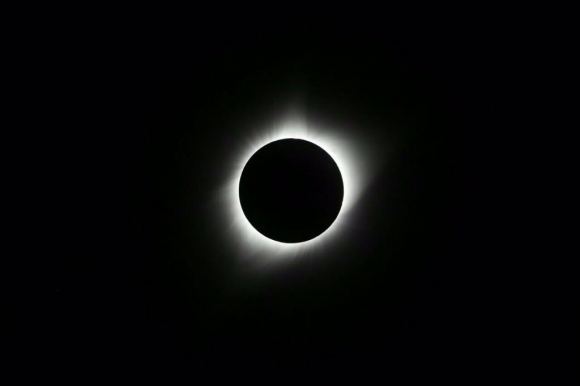
It was amazing. We changed plans last night, instead of going to St Joseph we drove to Columbia. I was really worried the first few minutes of the eclipse because it was cloudy, my PST couldn’t resolve the image of the Sun! But quickly the clouds dispersed. We were on a property from the family of my friend, around 25 people of all ages. When it was around 70% (partial) you could feel in the environment that something was going on. Everything got a lot more quiet and the temperature dropped. Everybody was trying to get pictures of the Sun with their phones on the PST. Then totality started, it was indescribable for me. I was seeing the Sun’s corona with my bare eyes. I was really nervous and anxious, actually. We could see Venus near the Sun. Everybody was super excited, I almost cried. The experience was amazing, a total success, the long trip was worth it.
Illinois- The Universe Today expedition to the Prairie State led by Publisher Fraser Cain also managed to catch a brief glimpse of totality through a gap in the clouds:
Can’t believe our luck. Hole in the clouds opened up right in time. I’m hooked! @Karlaii got it on camera. #eclipse2017 pic.twitter.com/Vu9Annq14t
— Fraser Cain (@fcain) August 21, 2017
Kentucky- Mike Weasner (@Mweasner)
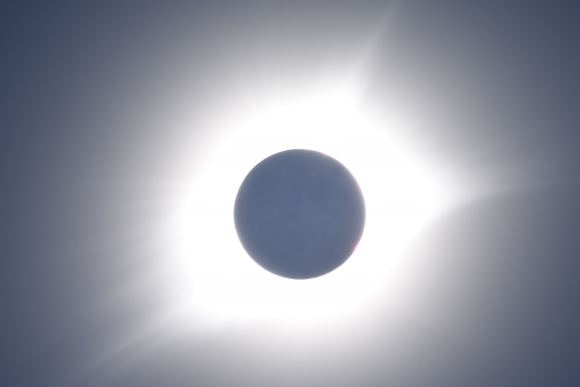
About 400 eclipse enthusiasts from around the world including me were part of a Sky and Telescope tour group. We were at Hopkinsville Community College located in Hopkinsville, Kentucky, where totality lasted 2 minutes and 40 seconds, which was too short. We arrived at the viewing site about 4.5 hours before First Contact. Traffic was surprisingly light. There were a few thin clouds but nothing significant. Anticipation was high. Many of us set up cameras and were ready well before First Contact. First Contact occurred with a clear sky, and the sky stayed mostly clear until about 30 minutes before Second Contact. Then a large cloud covered the Sun. Fortunately the cloud moved on within a couple of minutes and the sky was mostly clear through Fourth Contact. Totality was beautiful. Most people saw Venus, some saw Jupiter too, but no one seems to have seen any stars although it did get dark at the site. Many people in the group left soon after totality ended, but I and several others stayed to view and photograph the eclipse through Fourth Contact.
Tennessee- (Terry Horne @CapH_1)
My wife and I viewed the event from Sheep Barn Ridge, which is a few miles from Kingston, TN. We began the planning in late 2015 when we realized the shadow path was adjacent to our property near my folks in TN. Our location delivered 2 minutes and 29 seconds of totality, with clear skies, a valley pasture view among new friends, goats, llama, ducks, chickens and a few hounds.
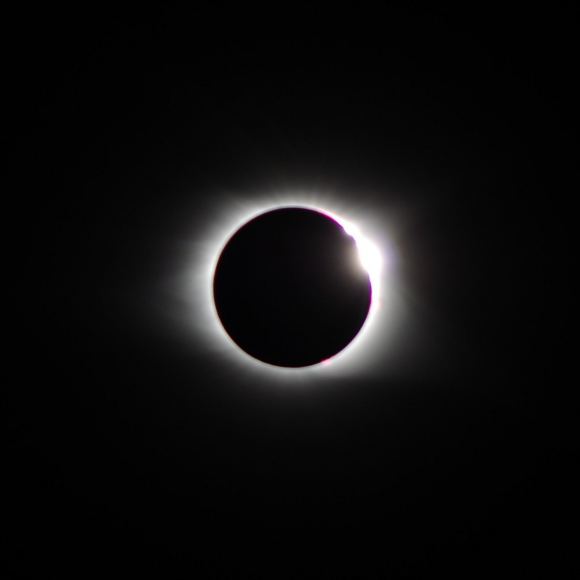
We experienced every awe & oddity we had studied during the ramp up to the event. My wife did an excellent job with her photo efforts. She balanced her personal viewing time and planned equipment duties well. This was a source of much worry and discussion during the months prior.
I’ll mention a few surprises. I was impressed by the amount of light cast on the landscape with barely a sliver of the Sun remaining. I suspect the ambient sunlight to the south east was the major source. The rapid transition to peak darkness was dramatic.
In contrast, I noticed a clear reduction of heat radiation on my skin with about 50% coverage. It was a hot day. I wished I’d had more time to observe the animals.
I found it somewhat humorous how many folks took all of the important PSA’s about retina damage to heart. Before totality they bowed their heads to the ground when they did not have their gasses on while walking, standing and sitting.
What I learned most was, to the inexperienced, East Tennessee Moonshine travels faster than the Moon’s shadow.
Be careful!
Georgia- Jeannette Iriye (@i_fridrich)
We found a lovely scenic overlook facing west in Sky Valley, just outside Dillard, Georgia. Skies were clear with only minimal cloud cover until about 13:30, when heavy cloud cover began to build in the south/southeast. The clouds obfuscated the remainder of our view of the eclipse directly. It did get much cooler, windy, and the crickets were singing just prior to and during totality.
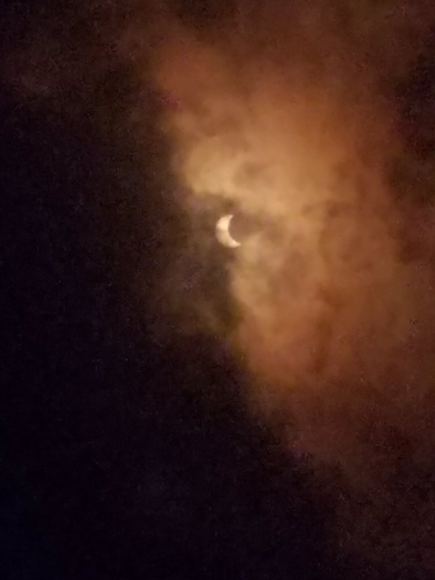
South Carolina- Terri (@wizbee1)
We didn’t make it to South Carolina, and had to turn the plane back because of weather. Watched instead from Saint Mary’s Georgia. Did feel the temperature drop and experienced darkening but not in totality.
And us? We watched from the Pisgah Astronomical Research Institute in North Carolina as the shadow of the Moon draped over the landscape. The rolling afternoon clouds afforded only brief glimpses of the partially eclipsed Sun. Then, just prior to totality, we caught the final moments as the Sun withered to a brief diamond ring flash… and was gone. Magic! Unfortunately, the corona remained hidden behind high clouds for the 107 seconds of darkness, though we were treated to an unworldly 360 degree sunset below the cloud deck. Nocturnal mosquitoes, fooled by the false dusk, began their rounds, as a light “eclipse wind” kicked up.
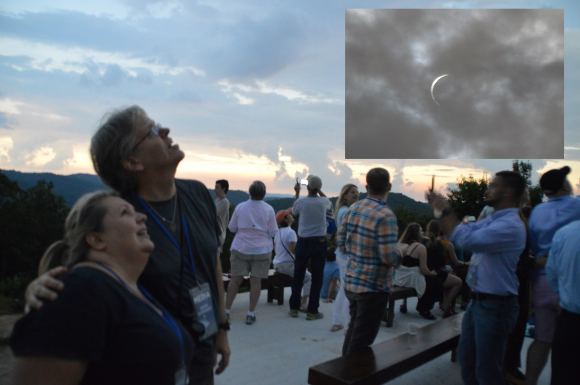
Then, it was over. Got the eclipse bug? Well, another total solar eclipse crosses the U.S. in 2024… but you don’t have to wait that long, as we’ve got one coming right up crossing Argentina and Chile on July 2nd, 2019…
I’ll see you there!

